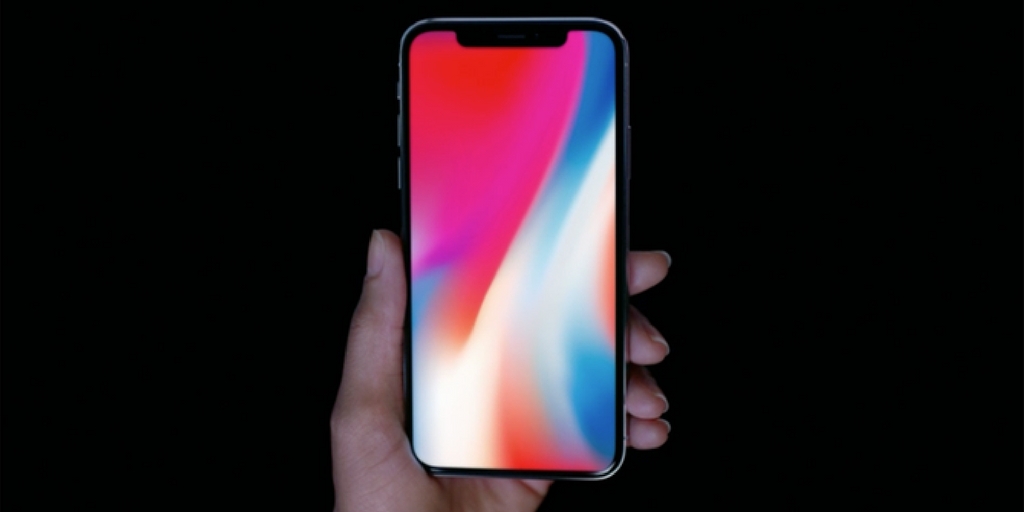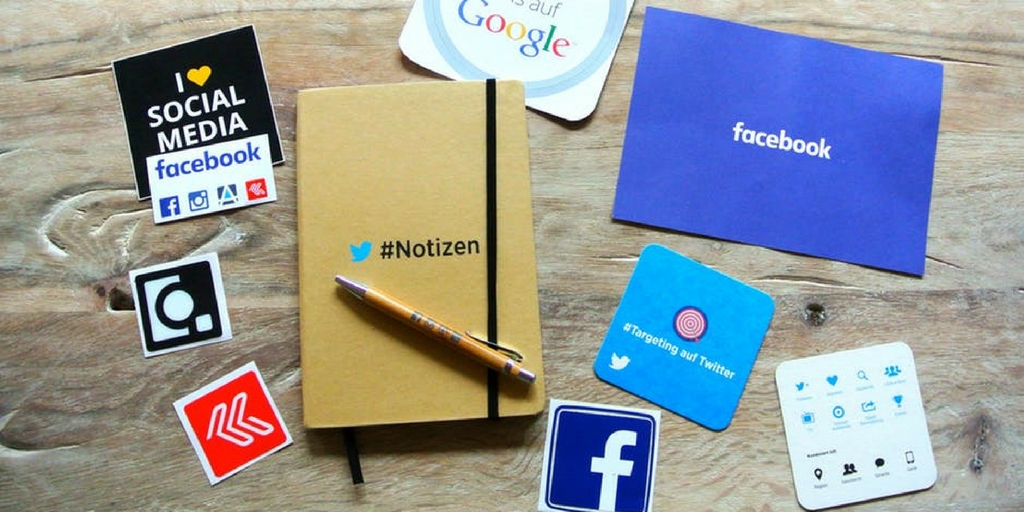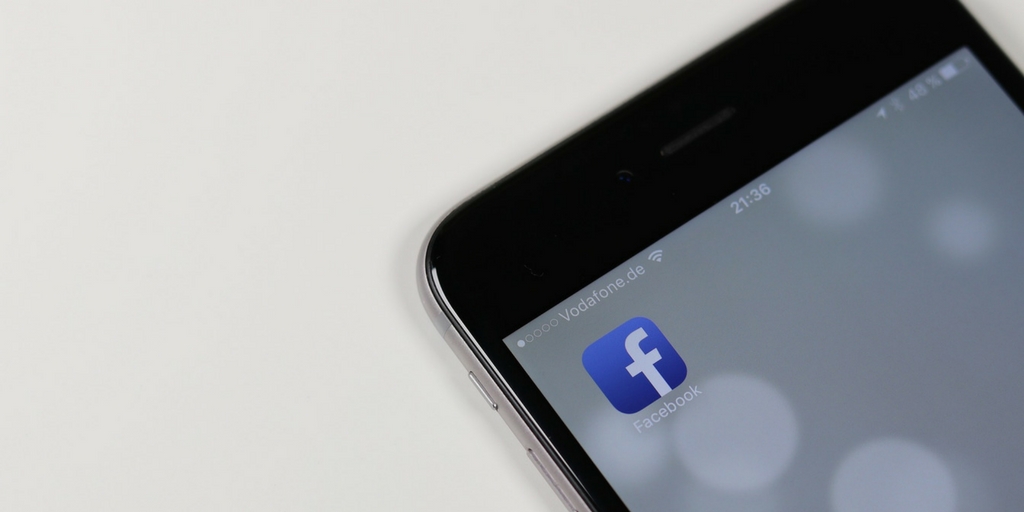
by Fronetics | Sep 26, 2017 | Blog, Current Events, Marketing, Social Media
Also in September 2017’s social media news: YouTube gets a new look, and LinkedIn adds a native advertising network.
With fall officially in swing, social media platforms have turned up the heat. During the month of September, Facebook has launched its original video content tab and begged music executives for the ability to download songs. YouTube reworked its mobile app and came out with a fresh, new design. LinkedIn introduced us to its new Audience Network. And Instagram just got easier to troll at work. Here’s this month’s social media news.
Facebook Watch Makes Its Appearance on Profiles
Facebook has officially rolled out its new Watch tab, which allows users to subscribe to original video content. The tab was available to a test audience in August, but is now open to all users in the U.S. on mobile, desktop and Facebook’s TV apps. Facebook is hoping to boost ad sales through the new content and create one more reason for people to continually check back in on their newsfeeds for content they can’t get anywhere else.
Apple Unveils iPhone X
On the heels of the iPhone 8 and iPhone 8 Plus release is the newest Apple must-have: the iPhone X. The X introduces a new wraparound screen and Apple’s cutting-edge technology, Face ID. Face ID is enabled by the TrueDepth camera and projects and analyzes more than 30,000 invisible dots to create a precise depth map of your face. This will allow users to access Apple Pay by simply looking into their screen. The phone also includes powerful new augmented reality features. At a press conference, the tech giant demonstrated high-fidelity visuals placed dynamically in the real world, viewable through the iPhone’s camera lens.
YouTube Unveils New Logo and Features on Mobile App
YouTube continues to evolve with its growing popularity. Recently, the video site came out with a sleek new design. The new logo and icon are cleaner, more flexible, and better designed for a multiscreen world. YouTube has also added speed up and slow down features to playback and the ability to browse new videos while viewing video content. YouTube is hoping these changes will continue to increase user engagement and usability.
Instagram Moving to Your Desktop
Instagram just launched instagram.com, allowing users to view Stories on their desktops. Soon, users will be able to create and post Stories to the website from their phones, as well. “Stories has quickly become an important part of the Instagram experience — over 250 million people use it every day to see what their friends are doing in the moment. Now we’re excited to bring stories to people who use Instagram on the web.”
LinkedIn Introduces New Audience Network
LinkedIn has launched its new LinkedIn Audience Network, “a native advertising network that enables you to reach even more professionals with your ads by placing your Sponsored Content on high-quality, third-party publishers across mobile and desktop.” The new network was created to help businesses increase their marketing footprint, cut budgets, and expand their content’s reach. LinkedIn assures marketers that it has “taken measures to ensure brand safety within [its] recently launched LinkedIn Audience Network,” such as vetting partner publishers to verify that they meet its advertising guidelines and regularly monitoring campaign activity on the network.
Twitter Adds Team Managements Feature
Now your colleagues can keep their Twitter passwords to themselves. The social media app just launched a new team management feature, called TweetDeck Teams, which allows multiple people to login to the same account without sharing passwords. The new feature divides users into three categories: owner, administrator, and contributor, and gives various levels of functionality to each category.
Facebook Artificial Intelligence Training Bots to Mimic Emotions
Facebook’s AI researchers are working to introduce the first robots that can replicate human emotion through subtle facial expressions. In newly released papers, the researchers discuss their overall success with their efforts and the affects this could have on videos in the future. These researchers are hoping the bots will one day improve the avatars in virtual reality.
Facebook Offers Hundreds of Millions for Music Rights
Facebook is offering up cash — and lots of it — to music producers and creators so users can legally include songs in videos they upload to the site. Reports indicate that Facebook has offered hundreds of millions of dollars to make the deal happen. Music owners have been negotiating with Facebook for months in search of a solution, and Facebook has promised to build a system to identify and tag music that infringes copyrights.
Related posts:


by Fronetics | Sep 20, 2017 | Blog, Content Marketing, Marketing, Social Media
When it comes to social media platforms like Facebook and LinkedIn, post once a day to improve engagement and visibility.
There has been endless research about the sweet spot for posting frequency to social media sites. The results all point to the same conclusion: there is no one-size-fits-all answer. You have to distribute content consistently over time, at the right time and in the right place for your business.
That being said, we at Fronetics do have some informed, data-based opinions about posting frequency for certain social media platforms. For example, we’ve written extensively about our Twitter experiment, in which we found that tweeting 40 times per day works best for us and most of our clients.
But for other platforms, we find that more doesn’t equal better. In fact, it can often equal worse. Let me explain why.
Why you should be posting less on Facebook and LinkedIn
We strongly believe that most B2B companies should post no more than one time per day on Facebook and LinkedIn. We also suggest that businesses only post during the workweek on LinkedIn. That is because of the way people use these networks — and because of how the platforms’ algorithms value content.
Firstly, though we’d like for prospects to be thinking of our brands constantly, they don’t. And they don’t want to. Think of that one family member that inundates your newsfeeds with posts. Though you might have liked to see a photo from that person now and again, the inappropriate posting frequency causes you to think negatively about each post you see.
And you are a business, not a family member. When you post too frequently, your business loses credibility, and followers view your posts as spam. Even on LinkedIn, which is a network for professional content, over-posting leads to disengagement.
Remember that the lifespan of a Facebook post is about 5 hours, and with LinkedIn, it’s even longer. (One of the first posts on my feed right now is from 5 days ago.) So you don’t need to provide a constant stream of content to get your audience’s attention. Your focus should be distributing the most relevant, interesting content you can. Which is related to the second reason we recommend posting only once a day on these networks: algorithms.
Facebook estimates that each user’s newsfeed must filter 1,500 possible stories from friends and pages every day. Ain’t nobody got time for that! So Facebook, like LinkedIn and other networks, uses an algorithm to determine the content you’d like to see most, based on feedback you provide. That feedback comes from actions you take: hiding posts, liking and sharing posts, and commenting, for example. It even considers how often your friends and the world at large engage with a post. This helps the algorithm filter down to the approximately 300 stories per day on your newsfeed.
All this means that the more engagement you can get on your posts, the more likely they are to be one of the 300 (in other words, appear in the newsfeeds of your followers). The more often you post, the less likely you are to foster engagement, diluting your chances of success and visibility.
So how can you increase likes and comments on your Facebook and LinkedIn posts?
Here are 3 tips for improving your posts to foster engagement.
1) Be strategic.
Instead of sharing content or publishing on an ad hoc basis, create a strategy and schedule to manage posting on social media. Work ahead of time so that you can evaluate what you’re posting from a 10,000-foot perspective. But be flexible enough so that you can always sub out scheduled content for breaking news or content related to current events when it makes sense.
2) Craft better posts.
Spend less time crafting a lot of posts, and more time producing quality content your audience will value. I recently talked about the 10x content rule. If your content is better than everything else that’s out there, people will gravitate to it.
3) Be smart about when.
When you’re only posting once a day, it’s important to make every post count. Use built-in and third-party analytics tools to determine when your followers are using these platforms. Schedule your posts to publish just before the greatest time of active use.
At the end of the day, there’s a fine line between annoying your social followers and remaining top of mind. Maintaining a dynamic and fluid posting strategy will ensure that your social efforts drive followers to action, rather than drive them away.
Related posts:


by Fronetics | Sep 7, 2017 | Blog, Content Marketing, Marketing, Social Media
When you are posting on social media could be as important as what you’re posting, and this CoSchedule study attempts to determine the best time to post.
Timing is everything. And that statement especially holds true when it comes to posting content to social media.
There’s no point in putting in the time and effort to create informative blog posts, inspirational tweets, or captivating Facebook posts if you’re not getting the most exposure you can out of your social media outlets.
That being said, there is ample data out there on the best times to post on Facebook, Twitter, LinkedIn, and Instagram. Earlier this year, CoSchedule looked at a combination of its own original data and more than a dozen studies on this very topic, from sources like Buffer and Quintly, and compiled the results to take the guess work out of when to post.
Here’s a breakdown of their results.
Best times to post on social media by network
Facebook
Most people are using Facebook around the clock, on their desktop and mobile devices. Unlike other sites that attract more attention during the work week, Facebook users are checking in at work and at home.
- The most optimal time to post is 1-4 p.m. Thursday through Sunday, specifically on Saturdays and Sundays between 12-1 p.m.
- Posts during the week had the highest clickthrough rate on Wednesdays at 3 p.m.
- Avoid weekends before 8 a.m. and after 8 p.m., when user numbers are significantly lower
Twitter
Much like Facebook, Twitter users are active on their mobile devices as well as their desktop computers. But they tend to treat Twitter like a revolving newsfeed, so downtime breaks — like during commuting hours and lunch — tend to see higher usage.
- Between 12-3 p.m. and 5-6 p.m. is the optimal time to tweet for the most exposure, which correlates with lunch and the evening commute.
- Weekday tweets have a higher chance of being retweeted with higher clickthrough numbers
- B2B tweets saw a 16% better performance during work hours, while B2C tweets saw a 17% better performance on weekends.
LinkedIn
Also known as the social media site for professionals, LinkedIn saw 25% of its users during weekdays and specifically, during work hours. Not as popular as some of its competitors, more than half of LinkedIn users visit less than once a week, so your posts need to deliver a clear message in short, informative posts.
- Not surprisingly, the posts with the highest views and clickthrough rates were Tuesdays through Thursdays from 7-8 a.m., 12 p.m. and 5-6 p.m., in direct correlation with the start and end of the work day.
- Some companies have seen a higher performance on Tuesdays between 10-11 a.m.
Instagram
More than half of Instagram users log on daily, but tend to use the mobile app in their free time. Posts for this site are image-driven and are often more creative and less data-heavy than other sites.
- In general, the best times to post are on Mondays and Thursdays, in the evenings or early mornings.
- Some companies have reported success on Mondays between 8-9 a.m., correlating with the morning commute.
Many people still play a guessing game when it comes to deciding the best time to post their content for the most impact. And though there is no magic formula for the most retweets or reposts, there is data to help guide you. Posting the right content, at the right time, can make the difference between getting valuable comments, shares, and clicks on your links, which translate to valuable new leads.
Related posts:


by Fronetics | Aug 29, 2017 | Blog, Content Marketing, Current Events, Marketing, Social Media
When it comes to social media news in August 2017, the words of Kanye West, “stronger, better, faster, stronger,” have never been truer.
August has seen a continued push to get more information to more people in real time. Pinterest is introducing mobile ads. YouTube is adding sharing and chat features to the app. Google is developing new software to rival Snapchat. And, of course, the social media giant Facebook is always working on new improvements to dominate its competitors.
Facebook Tests Custom Audiences Based on Interactions with Event Pages
Brands will soon have the ability to create custom audience groups based on visitors’ interactions with the brand’s event pages. Facebook has confirmed that brands will be able to choose custom audiences made up of users who responded to any event on their pages or to specific events, and they will also be able to include users who RSVPed as going, interested, or both. Though only in its testing phase, these initial companies have been able to create audience groups based on interactions within the past 180 days.
Google Developing Rival to Snapchat Discover Feature
Back in 2016, Snapchat introduced ‘Discover,’ which allowed users to view news in the form of Snapchat Stories. At the time, this new technology allowed social media to combine news and television in short videos. Now Google wants a piece of the action. Google is working to allow publishers the ability to create media-oriented content. “The new publisher technology, called ‘Stamp,’ represents an escalation in the competition between tech platforms for publisher partnerships and access to media content, which they need to drive user engagement,” writes Erik Sass for Media Post.
Pinterest Rolls Out Mobile Video Ads to All Advertisers
Initially introduced a year ago to a limited amount of Pinterest advertisers, now all advertisers will have the ability to create mobile video ads. Using auto-play, the new type of promoted videos will begin playing as soon as users scroll across a brand’s feed and will also auto-play in Pinterest’s search results. Jenny Chiu, head of partnerships at Pinterest, said in a blog post, “Your Promoted Video sparks into action the moment a Pinner scrolls across it in their feed — no need to hit play. They can just sit back and watch your video unfold. And unlike on other platforms, where ads interrupt people as they’re trying to enjoy posts from friends, on Pinterest, people are actually looking for videos that inspire them to give ideas a try.”
Twitter Tests New Feature that Allows Brands to Automate Their Promotional Tweets
Twitter is in the initial testing of having brands pay ($99) to have their tweets automatically promoted on its app. Brands can tweet as they normally would, and the social network will automatically promote some of those tweets, but brands cannot customize which tweets are promoted. Twitter will create bi-weekly reports that will include information on audience insights, user growth and new user engagement. Companies were able to sign up on Twitter’s homepage to try to land a spot in the beta testing, which is now completely full. Stay tuned to see if Twitter rolls out this new feature to all users.
LinkedIn Rolls Out Quick Access to Samsung Users
LinkedIn and Samsung have teamed up to create the ultimate user experience. Now Samsung Galaxy S8 and S8+ owners can have access to LinkedIn’s content and calendar experience. Using Bixby, Samsung’s digital assistant, users can easily access LinkedIn’s Trending Storylines that include top news stories and scheduling details through My Schedule notifications.
YouTube Adds Chat and Sharing Features to Mobile App
YouTube has been working on ways to make sharing videos easier than ever. With the newest app features, users can share videos directly through the mobile app, as well as chat with other viewers in real time. YouTube announced on its blog, “Not only can you share and receive videos in the app, you can also chat about them right on YouTube, reply with another video, invite others to the conversation, and more. We think it’ll make sharing easier, faster and more fun on your phone. And if you want to continue sharing videos through other apps, you can still do that too.”
Related posts:


by Fronetics | Jul 27, 2017 | Blog, Content Marketing, Current Events, Marketing, Social Media
In July’s social media news, platforms saw a rise in daily active users and broke records in more than one category.
Once thought to be a passing trend, social media is nowhere near slowing down in terms of growth. Next Web reported that India has taken over as the largest audience of Facebook, beating out the U.S. with over 241 million active users. Active users in India are up 27% in the past six months, twice the rate of U.S. users.
But the social media news doesn’t stop there. Facebook and Instagram are topping charts with their active users. LinkedIn and Google are boosting job opportunities through new features and search capabilities. And social media monitoring platforms are adding video to their repertoire.
Here’s a look at this month’s social media news.
Facebook reaches over 2 billion monthly active users around the world
India isn’t the only country boosting Facebook user numbers. The social media giant just celebrated having “2 billion people connecting and building communities on Facebook every month.” The company thanked its users with a personalized video and Mark Zuckerberg’s promise to take the global connection and use it to create a “more open and connected” world.
Instagram Stories reaches 250 million daily active users and adds live video replay
Instagram Stories continues to take over the ‘stories’ arena with 250 million active daily users. Snapchat, which founded the stories format, is falling far behind with only 161 million active daily users. Instagram Stories was unveiled last August and has experienced remarkable growth and success thanks to support from its sister company, Facebook. The social media platform has also introduced its newest feature, a share button with the ability to replay live videos for up to 24 hours.
Facebook tests custom audiences based on engagement with Instagram Business Profiles
Adweek reports that “Facebook is testing the ability for brands to create custom audiences based on engagement with Instagram business profiles.” This new type of filtering could allow brands to create engagement audiences, people who have previously engaged with your content on Instagram. Filters could include all interactions, users that have commented on a post, or any activity within a certain time frame. Though only in the testing stages, these custom audiences could help brands create specific messaging for targeted audiences based on their interactions with a brand’s Instagram page.
CrowdTangle adds video views to metrics
CrowdTangle, a social media monitoring platform for brands, has just added video views to its metrics for Facebook and Instagram. With video’s increasing popularity, the company felt it was important to offer its clients a way to measure how their videos are performing. “Publishers can now easily track emerging new trends and best practices on Facebook and Instagram, as well as discover great videos and video creators, see overall video views across their industry, and benchmark themselves against competitors,” CrowdTangle says.
LinkedIn creates new search to boost job opportunities
LinkedIn has created new search capabilities that make it easier for users to uncover new jobs and other professional opportunities. The new search also allows users to see the companies and job titles of the people who found them in a search, identifying opportunities that align with the user’s resume. Available on your phone or desktop computer, these new features make searching jobs and hiring managers that much more accessible.
Google launches Google for Jobs
Partnering with the biggest job searching sites — like LinkedIn, Monster and CareerBuilder — Google just introduced a new initiative to allow users to find job opportunities directly through a Google search. The new search update also allows users to receive email alerts of new employment postings in real time. “When Google for Jobs launches, it will act as kind of a mega job-search engine that will let you sort through multiple career sites in one go,” says Google CEO Sundar Pichai.
Related Posts









